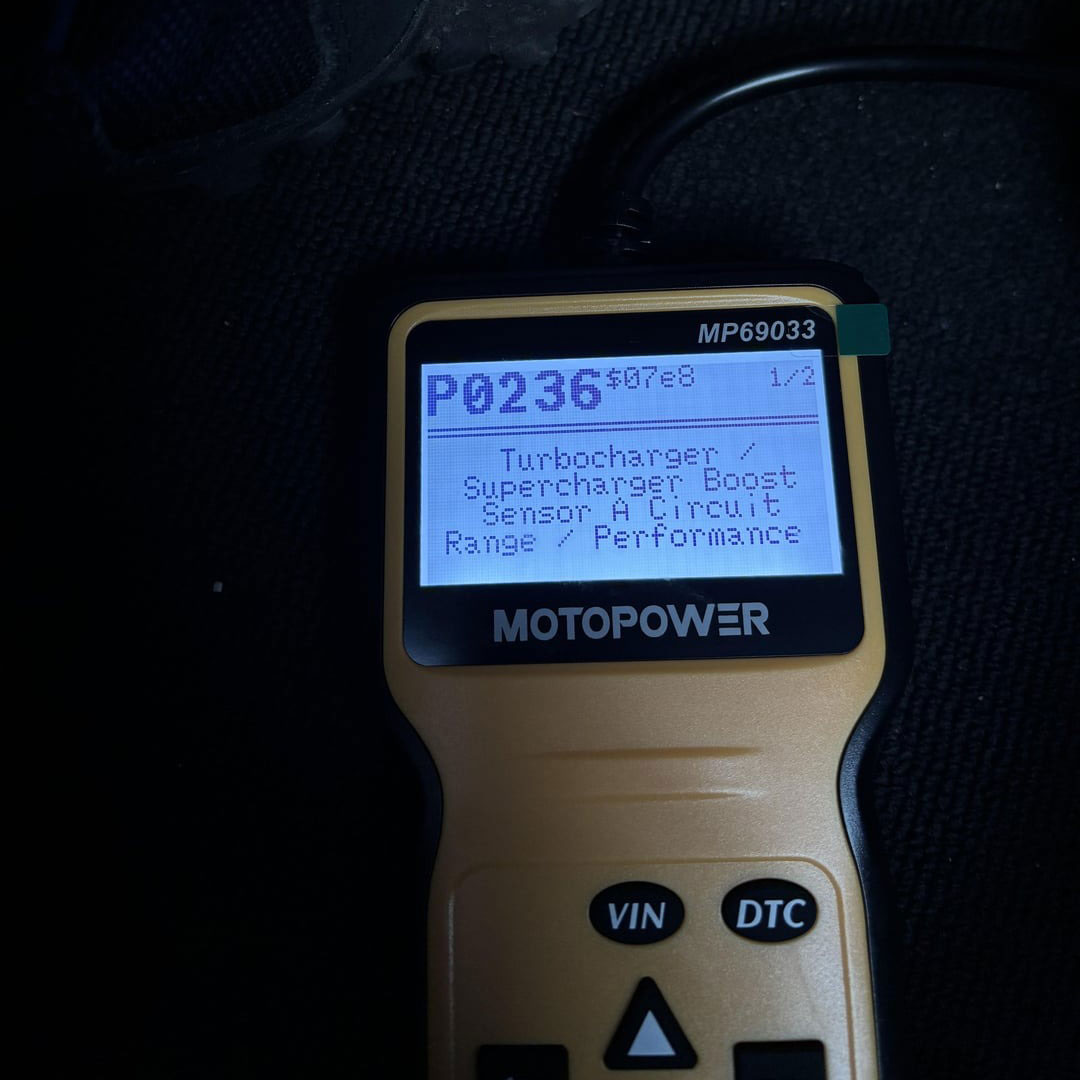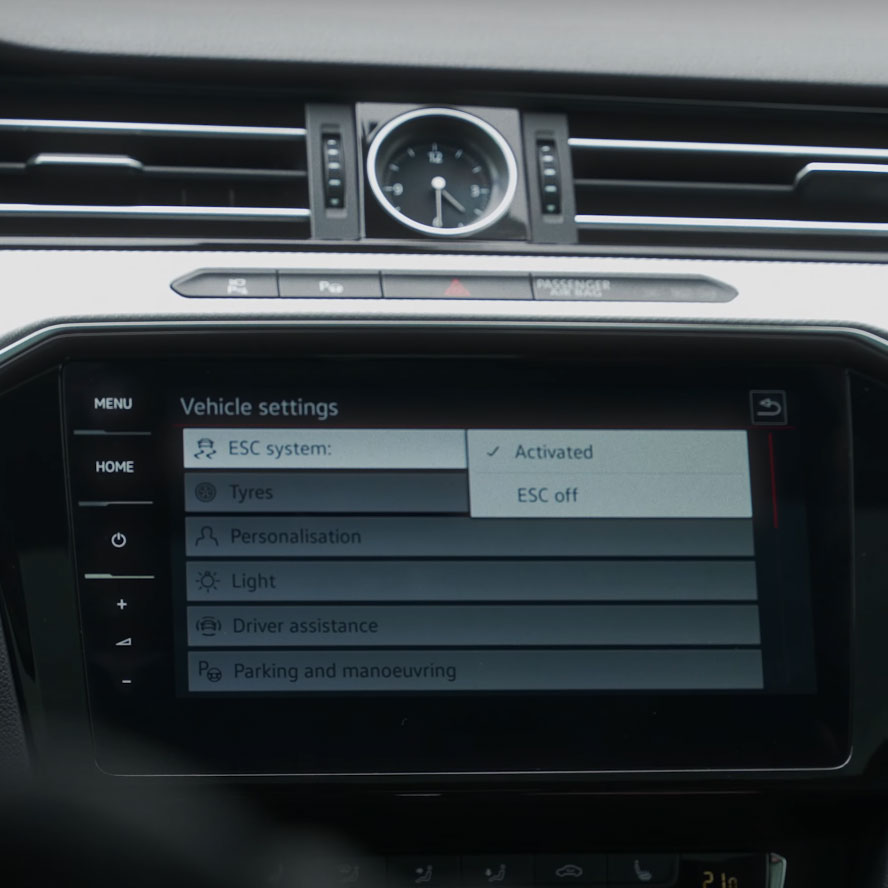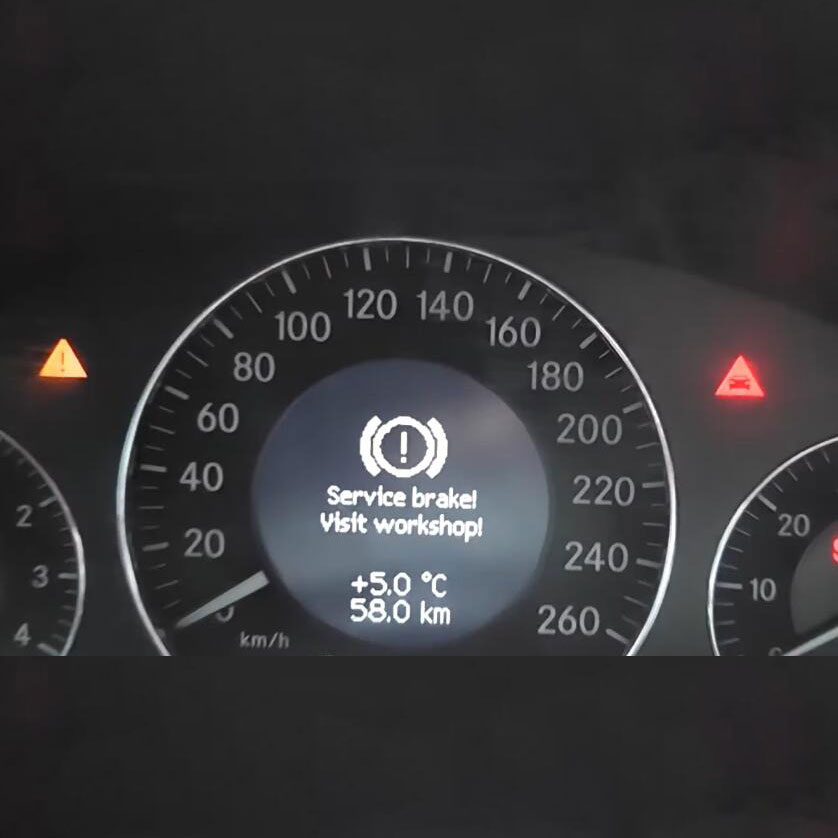
Audi DTC 00668:002 Troubleshooting, Causes, and Solutions
Contents
- 1. Understanding the Audi DTC 00668:002 Code
- 1.1. What is Terminal 30?
- 1.2. Control Modules Affected
- 1.3. Severity of the Issue
- 2. Common Causes of Audi DTC 00668:002
- 2.1. The Role of Battery Condition
- 2.2. Wiring and Connections: A Closer Look
- 2.3. Electrical Load and its Impact
- 3. Symptoms of Audi DTC 00668:002
- 3.1. Identifying Intermittent Symptoms
- 3.2. The Impact on Vehicle Safety Systems
- 4. Diagnosing the Audi DTC 00668:002 Code
- 4.1. Utilizing Diagnostic Scan Tools
- 4.2. Performing Voltage Drop Tests
- 4.3. Interpreting Scan Tool Data
- 5. Solutions for Audi DTC 00668:002
- 5.1. Battery Replacement: Choosing the Right One
- 5.2. Wiring Repair Techniques
- 5.3. Addressing Corrosion Issues
- 6. Advanced Coding and Programming Solutions with AutoExplain
- 6.1. Optimizing Voltage Management
- 6.2. Recoding Control Modules
- 6.3. The Benefits of Professional Coding Services
- 7. Preventing Future Occurrences of Audi DTC 00668:002
- 7.1. Establishing a Maintenance Schedule
- 7.2. Choosing Quality Electrical Components
- 7.3. The Role of Professional Inspections
- 8. AutoExplain: Your Partner in Audi Electrical Solutions
- 8.1. Remote Diagnostics and Programming
- 8.2. Accessing Expert Support
- 8.3. Investing in Reliable Solutions
- 9. FAQ: Audi DTC 00668:002
- 10. Conclusion
The Audi Dtc 00668:002, often indicating a low voltage issue, can be a frustrating problem for Audi owners and technicians alike; AutoExplain provides comprehensive solutions, from pinpointing the root cause to offering advanced coding and programming techniques to resolve this issue efficiently, ensuring optimal vehicle performance and reliability. This article delves deep into the intricacies of this diagnostic trouble code (DTC), exploring its causes, symptoms, and, most importantly, how to fix it.
1. Understanding the Audi DTC 00668:002 Code
What does the Audi DTC 00668:002 code really mean?
The Audi DTC 00668:002 indicates “Supply Voltage Terminal 30: Lower Limit Exceeded.” This means the control module has detected that the voltage supplied to it through Terminal 30 (a direct connection to the battery) has dropped below an acceptable level. It’s crucial to understand that this isn’t just a generic “low voltage” code; it specifically points to a problem with the voltage reaching the control module via Terminal 30, often highlighting potential issues within the power distribution system.
1.1. What is Terminal 30?
Terminal 30 is a standardized designation in automotive electrical systems, representing a direct, unfused connection to the positive (+) battery terminal. It’s designed to provide a constant power supply to various vehicle components, even when the ignition is off.
1.2. Control Modules Affected
Which Audi control modules are typically affected by the 00668:002 code?
The specific control modules affected by the 00668:002 code can vary depending on the Audi model and year, but some common culprits include:
- Engine Control Unit (ECU)
- Transmission Control Unit (TCU)
- Anti-lock Braking System (ABS) Control Module
- Airbag Control Module
- Central Electronics Control Module
1.3. Severity of the Issue
How serious is the Audi DTC 00668:002 code?
The severity of the Audi DTC 00668:002 code can range from a minor inconvenience to a major drivability issue. In some cases, the only symptom may be an occasional warning light on the dashboard. However, in more severe cases, it can lead to:
- Engine stalling
- Transmission shifting problems
- ABS malfunction
- Airbag system failure
- Complete vehicle immobilization
Because of the potential for serious consequences, it’s essential to address this code promptly and accurately.
2. Common Causes of Audi DTC 00668:002
What are the most frequent causes behind the Audi DTC 00668:002 code?
Several factors can contribute to the Audi DTC 00668:002 code. Here’s a breakdown of the most common causes:
- Weak or Failing Battery: A battery that is old, damaged, or not properly charged is the most frequent cause. As batteries age, their ability to hold a charge diminishes, leading to voltage drops, especially under load.
- Corroded or Loose Battery Terminals: Corrosion on the battery terminals can impede the flow of electricity, causing voltage drops. Similarly, loose terminals can create intermittent connections, resulting in voltage fluctuations.
- Faulty Wiring or Connections: Damaged, corroded, or loose wiring between the battery and the affected control module can restrict current flow and cause voltage to drop below the acceptable threshold.
- Excessive Electrical Load: If the vehicle’s electrical system is being heavily loaded by aftermarket accessories (e.g., high-powered audio systems, auxiliary lighting), it can strain the battery and lead to voltage drops.
- Faulty Voltage Regulator: The voltage regulator, typically integrated into the alternator, is responsible for maintaining a stable voltage output. If it malfunctions, it can cause voltage fluctuations, including drops that trigger the 00668:002 code.
- Failing Alternator: The alternator is responsible for charging the battery and providing power to the vehicle’s electrical system while the engine is running. If the alternator is failing, it may not be able to maintain sufficient voltage, especially under heavy load.
- Internal Control Module Failure: In rare cases, the 00668:002 code can be caused by an internal fault within the control module itself. This is usually the last thing to suspect after all other possibilities have been ruled out.
2.1. The Role of Battery Condition
How does the battery’s health influence the occurrence of the 00668:002 code?
The battery is the heart of the vehicle’s electrical system, and its condition directly impacts the voltage supplied to all components, including the control modules monitored by the 00668:002 code. A healthy battery should maintain a voltage of around 12.6 volts when the engine is off and between 13.5 and 14.5 volts when the engine is running. If the battery voltage drops below these levels, it can trigger the code.
According to a study by AAA, the average lifespan of a car battery is between 3 and 5 years, depending on factors such as climate, driving habits, and maintenance. As batteries age, they become more susceptible to sulfation (the build-up of lead sulfate crystals on the battery plates), which reduces their ability to hold a charge. Extreme temperatures can also accelerate battery degradation.
2.2. Wiring and Connections: A Closer Look
Why are wiring and connections so critical in preventing the 00668:002 code?
The wiring and connections in the vehicle’s electrical system act as the pathways for current flow. Any resistance in these pathways, caused by corrosion, damage, or loose connections, can impede the flow of electricity and cause voltage drops.
Corrosion is a common problem, especially in areas exposed to moisture and road salt. The presence of corrosion increases resistance, reducing the amount of voltage reaching the control module. Damaged wiring, such as frayed or cracked insulation, can also lead to shorts or open circuits, further disrupting the electrical flow.
2.3. Electrical Load and its Impact
How does excessive electrical load contribute to the 00668:002 code?
The vehicle’s electrical system is designed to handle a certain amount of load. However, when the load exceeds the system’s capacity, it can strain the battery and alternator, leading to voltage drops.
Aftermarket accessories, such as high-powered audio systems, auxiliary lighting, and winches, can significantly increase the electrical load. These accessories draw a substantial amount of current, especially when used simultaneously. If the alternator cannot keep up with the demand, the battery voltage will drop, triggering the 00668:002 code.
3. Symptoms of Audi DTC 00668:002
What symptoms might you experience if your Audi has the 00668:002 code?
The symptoms of the Audi DTC 00668:002 code can vary depending on the severity of the voltage drop and the specific control module affected. Here are some common symptoms:
- Warning Lights: The most common symptom is the appearance of one or more warning lights on the dashboard. These may include the check engine light, ABS light, airbag light, or other system-specific warning lights.
- Engine Stalling: If the ECU is affected by the low voltage, it can cause the engine to stall, especially at idle or during low-speed maneuvers.
- Transmission Problems: Low voltage to the TCU can result in erratic shifting, delayed shifting, or failure to shift altogether. The transmission may also enter a “limp mode,” restricting the available gears.
- ABS Malfunction: Low voltage to the ABS control module can disable the ABS system, resulting in loss of braking assistance during emergency stops.
- Airbag System Failure: Low voltage to the airbag control module can disable the airbag system, compromising occupant safety in the event of a collision.
- Electrical System Issues: Other electrical system issues, such as dimming headlights, slow power windows, or malfunctioning accessories, may also be present.
- Difficulty Starting: In some cases, the low voltage can make it difficult to start the engine, especially in cold weather.
- Stored Diagnostic Trouble Codes: The 00668:002 code will be stored in the vehicle’s computer, which can be retrieved using a diagnostic scan tool.
3.1. Identifying Intermittent Symptoms
How do you diagnose intermittent symptoms associated with the 00668:002 code?
Intermittent symptoms can be particularly challenging to diagnose. Here are some tips for identifying intermittent symptoms associated with the 00668:002 code:
- Note the Conditions: Keep a detailed record of when the symptoms occur, including the time of day, weather conditions, driving conditions, and any recent changes to the vehicle.
- Check Battery Voltage: Monitor the battery voltage regularly, both when the engine is off and when it’s running. Look for any sudden drops or fluctuations in voltage.
- Inspect Wiring and Connections: Carefully inspect the wiring and connections related to Terminal 30 and the affected control modules. Look for signs of corrosion, damage, or looseness.
- Use a Data Logger: A data logger can be used to record voltage levels and other electrical parameters over time. This can help identify intermittent voltage drops that may not be apparent during a static test.
- Perform a Load Test: A load test can help determine if the battery is able to maintain sufficient voltage under load. This involves applying a heavy electrical load to the battery and monitoring the voltage.
3.2. The Impact on Vehicle Safety Systems
How does the 00668:002 code affect critical safety systems like ABS and airbags?
The 00668:002 code can have a significant impact on vehicle safety systems like ABS and airbags. These systems rely on a stable and reliable power supply to function correctly. When the voltage drops below a certain threshold, the control modules may become disabled, compromising the effectiveness of these safety features.
According to the National Highway Traffic Safety Administration (NHTSA), ABS and airbags are essential safety systems that can significantly reduce the risk of serious injury or death in a collision. Any malfunction in these systems can have dire consequences.
4. Diagnosing the Audi DTC 00668:002 Code
What steps are involved in accurately diagnosing the Audi DTC 00668:002 code?
Diagnosing the Audi DTC 00668:002 code requires a systematic approach to identify the root cause of the voltage drop. Here’s a step-by-step diagnostic procedure:
- Scan for Diagnostic Trouble Codes: Use a diagnostic scan tool to retrieve all stored DTCs in the vehicle’s computer. This will help identify the specific control module affected by the low voltage.
- Check Battery Voltage: Measure the battery voltage with a multimeter. A healthy battery should read around 12.6 volts when the engine is off and between 13.5 and 14.5 volts when the engine is running.
- Inspect Battery Terminals and Connections: Inspect the battery terminals and connections for corrosion, damage, or looseness. Clean the terminals with a wire brush and tighten the connections as needed.
Alt text: Inspecting corroded car battery terminal connection for voltage drop, a common cause of Audi DTC 00668:002.
- Perform a Battery Load Test: Use a battery load tester to assess the battery’s ability to maintain voltage under load. If the battery fails the load test, it may need to be replaced.
- Check Alternator Output: Use a multimeter to measure the alternator output voltage. The alternator should be producing between 13.5 and 14.5 volts when the engine is running.
- Inspect Wiring and Connections: Carefully inspect the wiring and connections between the battery and the affected control module. Look for signs of corrosion, damage, or looseness.
- Check for Voltage Drop: Use a multimeter to measure the voltage drop across the wiring and connections. A voltage drop of more than 0.5 volts indicates excessive resistance in the circuit.
- Isolate the Circuit: If a voltage drop is detected, isolate the circuit to identify the source of the resistance. This may involve disconnecting components one at a time and rechecking the voltage drop.
- Test the Control Module: In rare cases, the 00668:002 code can be caused by an internal fault within the control module itself. This should be tested after all other possibilities have been ruled out.
4.1. Utilizing Diagnostic Scan Tools
How do diagnostic scan tools aid in pinpointing the source of the 00668:002 code?
Diagnostic scan tools are invaluable tools for diagnosing the Audi DTC 00668:002 code. These tools allow technicians to:
- Retrieve Stored DTCs: Scan tools can retrieve all stored DTCs in the vehicle’s computer, providing valuable information about the specific control module affected by the low voltage.
- View Live Data: Scan tools can display live data from various sensors and systems in the vehicle, including battery voltage, alternator output, and control module voltage. This allows technicians to monitor the electrical system in real-time and identify any anomalies.
- Perform Actuator Tests: Scan tools can perform actuator tests, which allow technicians to activate and deactivate various components in the vehicle to test their functionality. This can be useful for diagnosing problems with the alternator, voltage regulator, or other electrical components.
- Access Wiring Diagrams: Many scan tools provide access to wiring diagrams, which can be helpful for tracing circuits and identifying potential wiring problems.
4.2. Performing Voltage Drop Tests
What is a voltage drop test, and how does it help diagnose the 00668:002 code?
A voltage drop test is a simple yet effective method for identifying excessive resistance in a circuit. It involves measuring the voltage drop across a component or section of wiring while the circuit is under load. A voltage drop of more than 0.5 volts indicates excessive resistance, which can cause the 00668:002 code.
To perform a voltage drop test, follow these steps:
- Connect the positive lead of a multimeter to one end of the component or section of wiring being tested.
- Connect the negative lead of the multimeter to the other end of the component or section of wiring.
- Apply a load to the circuit by turning on the ignition or activating the component.
- Read the voltage drop on the multimeter.
4.3. Interpreting Scan Tool Data
How do you interpret the data from a scan tool to diagnose the 00668:002 code effectively?
Interpreting scan tool data requires a thorough understanding of the vehicle’s electrical system and the specific control modules involved. Here are some tips for interpreting scan tool data effectively:
- Focus on the Affected Control Module: Pay close attention to the data related to the control module identified by the DTC. Look for any abnormal voltage readings or other anomalies.
- Compare to Specification: Compare the data to the manufacturer’s specifications. This will help identify any readings that are outside of the normal range.
- Monitor Voltage Under Load: Monitor the voltage while the circuit is under load. This will help identify any voltage drops that may not be apparent during a static test.
- Look for Correlations: Look for correlations between different data points. For example, if the battery voltage drops when the alternator is under heavy load, it may indicate a problem with the alternator.
- Use Freeze Frame Data: Freeze frame data captures the data at the moment the DTC was stored. This can provide valuable insights into the conditions that led to the code.
5. Solutions for Audi DTC 00668:002
What are the best solutions for resolving the Audi DTC 00668:002 code?
The solution for the Audi DTC 00668:002 code depends on the underlying cause of the voltage drop. Here are some common solutions:
- Replace the Battery: If the battery is weak or failing, it should be replaced with a new, fully charged battery.
- Clean or Replace Battery Terminals: If the battery terminals are corroded, they should be cleaned with a wire brush. If they are severely damaged, they may need to be replaced.
- Repair or Replace Wiring: If the wiring is damaged or corroded, it should be repaired or replaced.
- Tighten Connections: Loose connections should be tightened to ensure a good electrical connection.
- Reduce Electrical Load: If the vehicle is being heavily loaded by aftermarket accessories, the load should be reduced. This may involve removing or upgrading the accessories.
Alt text: Audi battery replacement being performed to solve voltage supply issue DTC 00668:002
- Replace Voltage Regulator: If the voltage regulator is faulty, it should be replaced.
- Replace Alternator: If the alternator is failing, it should be replaced.
- Repair or Replace Control Module: In rare cases, the 00668:002 code can be caused by an internal fault within the control module itself. If this is the case, the control module may need to be repaired or replaced.
5.1. Battery Replacement: Choosing the Right One
How do you select the correct replacement battery for your Audi to avoid future issues?
Choosing the right replacement battery is crucial for ensuring the long-term reliability of the vehicle’s electrical system. Here are some factors to consider when selecting a replacement battery:
- Size and Type: Choose a battery that is the correct size and type for the vehicle. Consult the owner’s manual or a battery size chart to determine the appropriate battery for the Audi model.
- Cold Cranking Amps (CCA): CCA is a measure of the battery’s ability to start the engine in cold weather. Choose a battery with a CCA rating that meets or exceeds the manufacturer’s recommendations.
- Reserve Capacity (RC): RC is a measure of the battery’s ability to provide power to the vehicle’s electrical system if the alternator fails. Choose a battery with a RC rating that meets or exceeds the manufacturer’s recommendations.
- Warranty: Choose a battery with a good warranty. This will protect against premature failure.
- Brand Reputation: Choose a battery from a reputable brand. Reputable brands typically offer higher-quality batteries with better performance and reliability.
5.2. Wiring Repair Techniques
What are the best practices for repairing damaged wiring to eliminate the 00668:002 code?
Repairing damaged wiring requires careful attention to detail to ensure a reliable and long-lasting repair. Here are some best practices for repairing damaged wiring:
- Disconnect the Battery: Before working on any electrical wiring, disconnect the battery to prevent electrical shocks or damage to the vehicle’s electrical system.
- Use Proper Tools: Use proper tools for cutting, stripping, and crimping wires. This will ensure a clean and secure connection.
- Use High-Quality Connectors: Use high-quality connectors that are designed for automotive use. These connectors are typically waterproof and corrosion-resistant.
- Solder Connections: Whenever possible, solder the connections for added strength and reliability.
- Insulate Connections: Insulate all connections with heat shrink tubing or electrical tape to prevent shorts and corrosion.
- Route Wiring Properly: Route the wiring properly to prevent it from being damaged by sharp edges, heat, or moving parts.
- Secure Wiring: Secure the wiring with zip ties or clamps to prevent it from rubbing against other components.
5.3. Addressing Corrosion Issues
How do you effectively deal with corrosion on battery terminals and wiring connections?
Corrosion is a common problem in automotive electrical systems, especially in areas exposed to moisture and road salt. Here’s how to effectively deal with corrosion on battery terminals and wiring connections:
- Disconnect the Battery: Before cleaning any electrical connections, disconnect the battery to prevent electrical shocks or damage to the vehicle’s electrical system.
- Clean Battery Terminals: Clean the battery terminals with a wire brush or a battery terminal cleaner. Remove all traces of corrosion.
- Clean Wiring Connections: Clean wiring connections with a wire brush or electrical contact cleaner. Remove all traces of corrosion.
- Apply Dielectric Grease: Apply a thin layer of dielectric grease to the battery terminals and wiring connections to prevent future corrosion.
- Replace Corroded Components: If the battery terminals or wiring connections are severely corroded, they may need to be replaced.
6. Advanced Coding and Programming Solutions with AutoExplain
How can AutoExplain’s coding and programming services help resolve the Audi DTC 00668:002 code?
While the Audi DTC 00668:002 code typically points to hardware issues like a faulty battery or wiring, advanced coding and programming solutions offered by AutoExplain can play a crucial role in optimizing the vehicle’s electrical system and preventing future occurrences. Here’s how:
- Software Updates: AutoExplain can provide software updates for the affected control modules. These updates may include improved voltage management strategies, which can help mitigate the impact of voltage drops.
- Parameter Adjustments: AutoExplain can adjust certain parameters within the control modules to optimize their performance and reduce their sensitivity to voltage fluctuations.
- Custom Coding: In some cases, AutoExplain can perform custom coding to address specific issues related to the 00668:002 code. This may involve modifying the control module’s software to compensate for voltage drops or to disable certain features that are contributing to the problem.
6.1. Optimizing Voltage Management
How can coding optimize the voltage management system in Audi vehicles?
Coding can optimize the voltage management system in Audi vehicles by:
- Adjusting Voltage Thresholds: Coding can adjust the voltage thresholds at which the control modules trigger DTCs. This can help prevent false alarms caused by minor voltage fluctuations.
- Optimizing Load Management: Coding can optimize the way the vehicle manages electrical loads. This can help prevent excessive load on the battery and alternator, reducing the risk of voltage drops.
- Enabling Adaptive Charging: Coding can enable adaptive charging, which adjusts the charging voltage based on the battery’s condition and the vehicle’s operating conditions. This can help extend battery life and improve overall electrical system performance.
6.2. Recoding Control Modules
When is it necessary to recode a control module after addressing the 00668:002 code?
Recoding a control module may be necessary after addressing the 00668:002 code in the following situations:
- Control Module Replacement: If the control module has been replaced, it will need to be recoded to match the vehicle’s specifications and ensure proper functionality.
- Software Update: If the control module has been updated with new software, it may need to be recoded to activate the new features and optimize its performance.
- Parameter Adjustment: If the parameters within the control module have been adjusted, it may need to be recoded to save the changes and ensure they are applied correctly.
6.3. The Benefits of Professional Coding Services
What are the advantages of using professional coding services like AutoExplain for Audi vehicles?
Using professional coding services like AutoExplain for Audi vehicles offers several advantages:
- Expertise and Experience: AutoExplain has a team of experienced technicians who are experts in Audi coding and programming. They have the knowledge and skills to diagnose and resolve complex electrical system issues.
- Advanced Equipment: AutoExplain uses state-of-the-art diagnostic and coding equipment to ensure accurate and reliable results.
- Custom Solutions: AutoExplain can provide custom coding solutions tailored to the specific needs of the vehicle and the customer.
- Warranty: AutoExplain offers a warranty on its coding services, providing peace of mind and protection against future issues.
7. Preventing Future Occurrences of Audi DTC 00668:002
What steps can you take to prevent the Audi DTC 00668:002 code from recurring?
Preventing future occurrences of the Audi DTC 00668:002 code involves implementing a proactive maintenance plan for the vehicle’s electrical system. Here are some key steps:
- Regular Battery Maintenance: Have the battery tested regularly (at least once a year) to assess its condition. Replace the battery as needed, following the manufacturer’s recommendations.
- Inspect Battery Terminals and Connections: Inspect the battery terminals and connections regularly for corrosion, damage, or looseness. Clean the terminals as needed and tighten the connections.
- Monitor Electrical Load: Avoid overloading the vehicle’s electrical system with aftermarket accessories. If you do install aftermarket accessories, make sure they are properly installed and do not draw excessive current.
- Check Alternator Output: Have the alternator output checked regularly to ensure it is functioning properly.
- Inspect Wiring and Connections: Inspect the wiring and connections throughout the vehicle’s electrical system regularly for damage, corrosion, or looseness. Repair or replace any damaged wiring or connections.
7.1. Establishing a Maintenance Schedule
How do you create an effective maintenance schedule to minimize electrical issues?
Creating an effective maintenance schedule is crucial for minimizing electrical issues and preventing the recurrence of the 00668:002 code. Here’s a sample maintenance schedule:
| Interval | Maintenance Task |
|---|---|
| Every 3 Months | Inspect battery terminals and connections |
| Every 6 Months | Check battery voltage and alternator output |
| Every Year | Have battery load tested |
| Every 3-5 Years | Replace battery |
| As Needed | Repair or replace damaged wiring or connections |
7.2. Choosing Quality Electrical Components
Why is it important to use high-quality electrical components in Audi vehicles?
Using high-quality electrical components is essential for ensuring the reliability and longevity of the vehicle’s electrical system. Low-quality components are more likely to fail prematurely, leading to electrical problems and potentially triggering the 00668:002 code.
According to a study by the Automotive Aftermarket Industry Association (AAIA), using high-quality replacement parts can significantly reduce the risk of vehicle breakdowns and improve overall vehicle performance.
7.3. The Role of Professional Inspections
How can professional inspections help prevent electrical system problems in Audi vehicles?
Professional inspections can play a vital role in preventing electrical system problems in Audi vehicles. A qualified technician can identify potential issues before they escalate into major problems. During a professional inspection, the technician will:
- Thoroughly Inspect the Electrical System: The technician will thoroughly inspect the vehicle’s electrical system, including the battery, alternator, wiring, and connections.
- Perform Diagnostic Tests: The technician will perform diagnostic tests to assess the health of the electrical system and identify any potential problems.
- Provide Recommendations: The technician will provide recommendations for any necessary repairs or maintenance.
8. AutoExplain: Your Partner in Audi Electrical Solutions
Why choose AutoExplain for diagnosing and resolving Audi electrical issues, including the 00668:002 code?
AutoExplain is your trusted partner for diagnosing and resolving Audi electrical issues, including the 00668:002 code. We offer a comprehensive range of services, including:
- Expert Diagnostics: Our team of experienced technicians has the knowledge and skills to accurately diagnose even the most complex electrical system problems.
- Advanced Coding and Programming: We offer advanced coding and programming solutions to optimize your Audi’s electrical system and prevent future issues.
- Quality Repairs: We use only high-quality replacement parts and follow industry best practices to ensure reliable and long-lasting repairs.
- Exceptional Customer Service: We are committed to providing exceptional customer service and ensuring your complete satisfaction.
Don’t let the Audi DTC 00668:002 code leave you stranded. Contact AutoExplain today for expert diagnostics, coding, and repair services.
8.1. Remote Diagnostics and Programming
How does AutoExplain provide remote diagnostic and programming services for Audi vehicles?
AutoExplain offers remote diagnostic and programming services for Audi vehicles, allowing you to get expert assistance from the comfort of your own home or shop. Our remote services utilize advanced diagnostic tools and secure remote access technology to connect to your vehicle’s computer system.
Through remote diagnostics, our technicians can:
- Scan for Diagnostic Trouble Codes: Retrieve all stored DTCs in your vehicle’s computer.
- View Live Data: Monitor real-time data from various sensors and systems.
- Perform Actuator Tests: Activate and deactivate components to test their functionality.
Through remote programming, our technicians can:
- Update Software: Install the latest software updates for your vehicle’s control modules.
- Adjust Parameters: Modify control module parameters to optimize performance and customize features.
- Perform Custom Coding: Implement custom coding solutions tailored to your specific needs.
8.2. Accessing Expert Support
How can you access AutoExplain’s expert support for Audi electrical issues?
Accessing AutoExplain’s expert support for Audi electrical issues is easy. You can contact us through the following channels:
- Phone: Call us at +1(936)2896695 to speak with one of our knowledgeable technicians.
- Email: Send us an email at [email protected] with your questions or concerns.
- Website: Visit our website at autoexplain.com to learn more about our services and submit a service request.
- WhatsApp: Contact us via WhatsApp at +1(936)2896695 for immediate assistance.
- Address: Visit our office at 1500 N Grant ST Sten Denver, Colorado, United States.
8.3. Investing in Reliable Solutions
Why is investing in AutoExplain’s reliable solutions a smart choice for Audi owners and technicians?
Investing in AutoExplain’s reliable solutions is a smart choice for Audi owners and technicians because:
- We Save You Time and Money: Our expert diagnostics and efficient repair services can save you time and money by accurately identifying the root cause of the problem and implementing the most effective solution.
- We Improve Vehicle Performance: Our advanced coding and programming services can optimize your Audi’s electrical system, improving its performance and reliability.
- We Provide Peace of Mind: Our warranty on our services provides peace of mind and protection against future issues.
- We Offer Exceptional Value: We offer competitive pricing and exceptional value for our services, making us the smart choice for Audi electrical solutions.
9. FAQ: Audi DTC 00668:002
Here are some frequently asked questions about the Audi DTC 00668:002 code:
-
What does the Audi DTC 00668:002 code mean?
The Audi DTC 00668:002 means “Supply Voltage Terminal 30: Lower Limit Exceeded,” indicating low voltage to a control module. -
What are the common causes of the 00668:002 code?
Common causes include a weak battery, corroded terminals, faulty wiring, or a failing alternator. -
What are the symptoms of the 00668:002 code?
Symptoms may include warning lights, engine stalling, transmission problems, or ABS malfunction. -
How do I diagnose the 00668:002 code?
Diagnose with a scan tool, battery voltage check, load test, and wiring inspection. -
Can I fix the 00668:002 code myself?
Minor issues like cleaning terminals can be DIY, but complex problems require a professional. -
How much does it cost to fix the 00668:002 code?
Costs vary, but battery replacement is usually the most affordable fix. -
Can coding help with the 00668:002 code?
Yes, coding can optimize voltage management and prevent future occurrences. -
When should I replace my Audi’s battery?
Replace the battery every 3-5 years, or if it fails a load test. -
How can I prevent the 00668:002 code from recurring?
Regular battery maintenance, quality components, and professional inspections can help. -
Why choose AutoExplain for Audi electrical issues?
AutoExplain offers expert diagnostics, advanced coding, quality repairs, and exceptional service.
10. Conclusion
The Audi DTC 00668:002 code can be a challenging issue to diagnose and resolve, but with a systematic approach and the right tools, it can be effectively addressed. Remember to start with the basics, such as checking the battery and connections, and then move on to more advanced diagnostic techniques as needed. And if you need expert assistance, don’t hesitate to contact AutoExplain for reliable solutions and exceptional service. AutoExplain’s commitment to providing cutting-edge coding and programming solutions ensures that Audi owners and technicians have the resources they need to keep their vehicles running smoothly and efficiently, reducing the likelihood of voltage-related problems and maximizing vehicle performance; consider AutoExplain as your premier partner for resolving complex Audi electrical issues, offering remote assistance and tailored solutions designed to enhance the reliability and longevity of your vehicle’s electrical system.


How to Deactivate ESC in Volkswagen, Audi, Skoda, or SEAT

Mercedes Benz ‘Service Brake Visit Workshop’ Warning? Here’s What Dealers Don’t Tell You!

How to Perform Seat Navigation Update? – A Comprehensive Guide for Technicians






